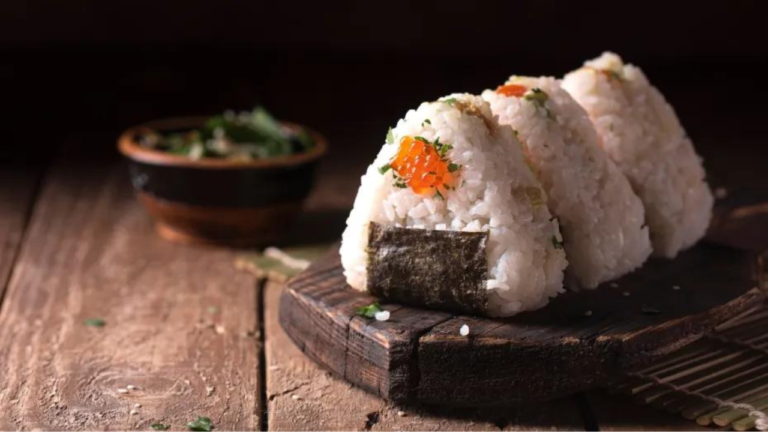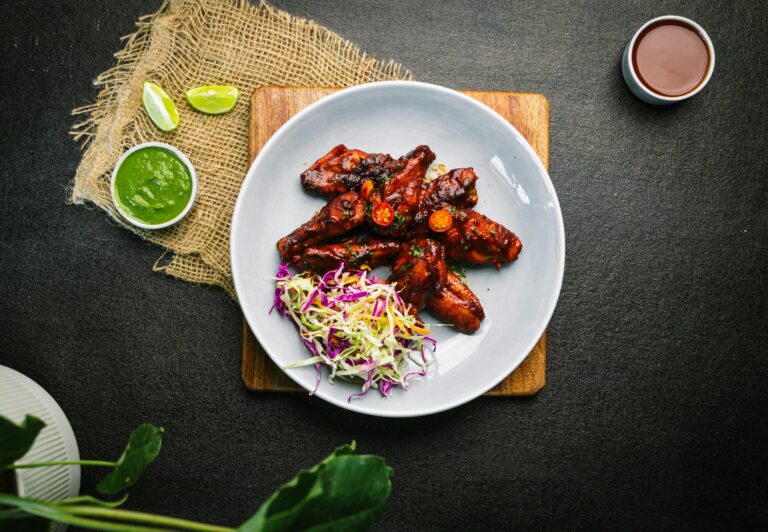Why Do Sautéed Vegetables Go Best As A Side Dish Or Appetizer? Are Sautéed Vegetables Good for You?
Whether you love veggies or not, one thing is certain: they are extremely beneficial to your health. You may make them even healthier by preparing them in ways that increase their benefits.
Surprisingly that is unlikely to be raw. In some studies, boiling breaks down many vegetables’ tough outer layers and cellular structure, allowing your body to absorb their nutrients more effectively.
The best way to enjoy fresh vegetables in a flavorful mix is to sauté them. This lively mix of multiple veggies is both healthful and delicious. This dish for sautéed vegetables uses a rapid stir-frying method, using very little oil in a hot pan or skillet, which is a Chinese cooking technique. Although the stir-frying method was developed in China, it is currently popular throughout Asia and the West.

While cooking vegetables might lead to a loss of some micronutrients, it can also increase the availability of other nutrients. Pick spinach as an example. Although iron and calcium are beneficial to your health, spinach also includes oxalic acid, which binds to calcium and reduces its availability when consumed raw. Thus, sautéed or blanched spinach will have more nutrients than raw spinach. That being said, there are still benefits to eating raw spinach, so don’t stop. It simply means that if you sauté it from time to time, you will be likely to get more of those particular nutrients from it.

It varies on the vegetable and cooking method. When done properly, sautéing locks in most of the nutrients in veggies because there’s no liquid for the nutrients to seep into and the food cooks quickly. Another fantastic method to cook veggies is to blanch them—a very brief cook in quickly boiling salted water that preserves their vibrant colors—while also seasoning them.
As shown by studies, when food is deep-fried, fat leaks into it and causes veggies to dry up. However, sautéing a variety of veggies in a small amount of healthful cooking oil, like extra-virgin olive oil, is an ideal way to prepare them. In other ways of adding flavor, Magee, who works as the corporate nutritionist for the grocery store chain Albertsons Companies, noted that adding olive oil “appears to increase the absorption of phytonutrients like phenols and carotenes.” This is because a large number of the vitamins and elements found in veggies are fat soluble, which means that when fat is present, your body absorbs them more effectively.

Why Sautéed Vegetables Good for You?
For certain vegetables, sautéing works well,
I adore sautéing spinach, broccoli, mushrooms, and bell peppers in a lot of garlic and olive oil. Onions and butter are sautéed together until the cabbage becomes caramelized and delicious. Sautéing onions and peppers together and topping grilled chicken and sausages is a delicious combination. Add a dash of oregano, grounded black pepper, and garlic to make them even better! Since some nutrients, like vitamin C or E, are heat sensitive, cooking vegetables longer will result in fewer nutrients being available. This is because boiling vegetables reduces their nutritional content the least. Furthermore, using this way of cooking is beneficial since certain plants contain nutrients that are activated by heat.

For some reason, sautéing has become known as one of the especially beneficial vegetable cooking techniques:
- Sautéing is a great way to cook many different kinds of veggies, including thick root vegetables and delicate greens. You can change the cooking time to fit the needs of the particular veggie.
- Compared to other cooking techniques like boiling or steaming, which might result in some nutritional loss, sautéing veggies at high heat for a brief time helps preserve more of their vitamins, minerals, and antioxidants.
- Sautéing is a basic cooking technique that is quick and simple to use, which makes it a practical option for busy home cooks.
- Sautéing veggies keeps their crunchy-tender texture and keeps them from getting overdone or mushy by cooking them rapidly.

- You can easily customize sautéing by adding different herbs, spices, or flavorings while the food is cooking. You can make recipes that are customized to your preferences and experiment with different flavor profiles thanks to this flexibility.
- Sautéing veggies brings out their inherent sweetness and enriches their flavors thanks to the high, direct heat. Additionally, it can enhance the flavor by giving the vegetable edges a lovely caramelized or browned appearance.
- Vegetables that have been sautéed often maintain their eye-catching hues and textures. This may enhance the whole eating experience and increase the appeal of veggies, particularly for people who might be cautious about eating them.
- Cooking breaks down the cell walls in some vegetables, allowing you to absorb more nutrients even though some components are removed. This makes some veggies more nutrient-dense.
All things considered, sautéing is a fantastic way to bring out the best in fresh veggies because of its high heat, quick cooking time, and capacity to retain texture and nutrients.
Instead Of Frying, Sauté or Steam Instead Of Boiling,

According to a Report from CNN:
In some studies, when food is deep-fried, fat seeps into it and causes veggies to dry up. However, sautéing a variety of veggies in a small amount of healthful cooking oil, like extra-virgin olive oil, is a terrific method to prepare them. Besides enhancing flavor, Magee, who works as the corporate nutritionist for the grocery store chain Albertsons Companies, noted that adding olive oil “appears to increase the absorption of phytonutrients like phenols and carotenes.” This is because a large number of the vitamins and elements found in veggies are fat soluble, which means that when fat is present, your body absorbs them more effectively.

A 2015 study found that sautéing some of the most well-liked Mediterranean veggies, including eggplant, in extra-virgin olive oil increases the antioxidant content of the oil, which may help prevent cancer.
Olive oil contains one of the highest concentrations of antioxidants and phytonutrients among cooking oils, making it an excellent choice for sautéing. Although olive oil has a lower smoke point than canola, Magee explains that “you can avoid the higher temperatures when sautéing because you control the temperature at which the food is cooked.”

It is frequently advised to reduce the amount of liquid, temperature, and cooking time. For this reason, steaming is among the finest methods for cooking most veggies. It appears that broccoli, which has long been hailed as one of the best meals against cancer, is one example of this.
Magee encouraged shoppers to look for firm florets with a purple, dark green, or bluish tone on top while choosing fresh broccoli. “Because they probably have higher levels of vitamin C and beta carotene than florets with paler green tips.”
Broccoli was prepared using five common techniques in a 2009 study: boiling, steaming, microwaving, stir-frying, and stir-frying/boiling. Steaming retained the largest amount of nutrients, according to research.

“Water-soluble vitamins, such as vitamin C, B1, and folate, seep into the water when vegetables are boiling,” explained Magee. As a result, these vitamins normally flow down the drain, except if you choose to consume the water with your vegetables, such as in stews or soups. Vegetables cooked by steaming are not in contact with the boiling water, making it a gentler cooking method.
A different study from 2009 revealed that boiling peas, cauliflower, and zucchini reduces their antioxidant profile by more than half. “When it comes to cooking veggies, water is not the cook’s best friend,” the researchers concluded.

A rule without exceptions, though, is what? Cooked carrots are the item in question. According to a different study, boiling and steaming both raise beta-carotene levels. However, because chopping can diminish nutrients by 25%, try cooking carrots whole.
It’s usually recommended to cook vegetables whole to retain their nutrients. If that isn’t feasible, make sure to chop them into big, homogeneous pieces so they cook through thoroughly. Additionally, Magee advised delaying washing your veggies until right before cutting them because doing so could encourage bacterial growth and hasten the deterioration process.
Sautéed Vegetables are Simple to Prepare,
Make a delicious and quick sautéed veggie dish with these guidelines:
- Use freshly cut raw vegetables and sauté them right away.
- If the vegetable peel is edible, don’t peel it. The peel has the majority of the nutrients.
- Chop veggies into evenly sized pieces for easy and smooth cooking.
- Blanch for a short while vegetables that are difficult to cook, such as beans. You can keep these as well and use them in cooking.
- Get all vegetables in their “baby variant” for a more flavorful taste.

- Add some vinegar or lemon juice to get the tangy flavor.
- To preserve nutrients, cut the vegetables into big pieces.
- Add herbs, preferably fresh, for fragrance and potential health benefits.
- Make the sauce before it’s time and store it in the freezer for later use.
- You can instead use chicken or vegetable broth as a substitute for the sauce.
- Cook for a little time. Just till the veggies are soft to keep the nutrients.

Consuming the suggested daily intake of veggies is a great approach to protecting and improving your heart health since your heart depends on antioxidants, fiber, and other vitamins and minerals to function properly and battle disease. Broccoli, Brussels sprouts, spinach, cabbage, and other green vegetables—as well as some starchy vegetables—are particularly rich in these beneficial antioxidants, and Fruits and vegetables are beneficial to several chronic diseases.

Also, you are probably consuming less meat and carbohydrates when you have more veggies on your plate because of simple plating adjustments. (Consider ordering a side of greens like Cruciferous vegetables with your chicken instead of fries or a salad for appetizers instead of mozzarella sticks because you know fruits and vegetables are best friends of yours).







